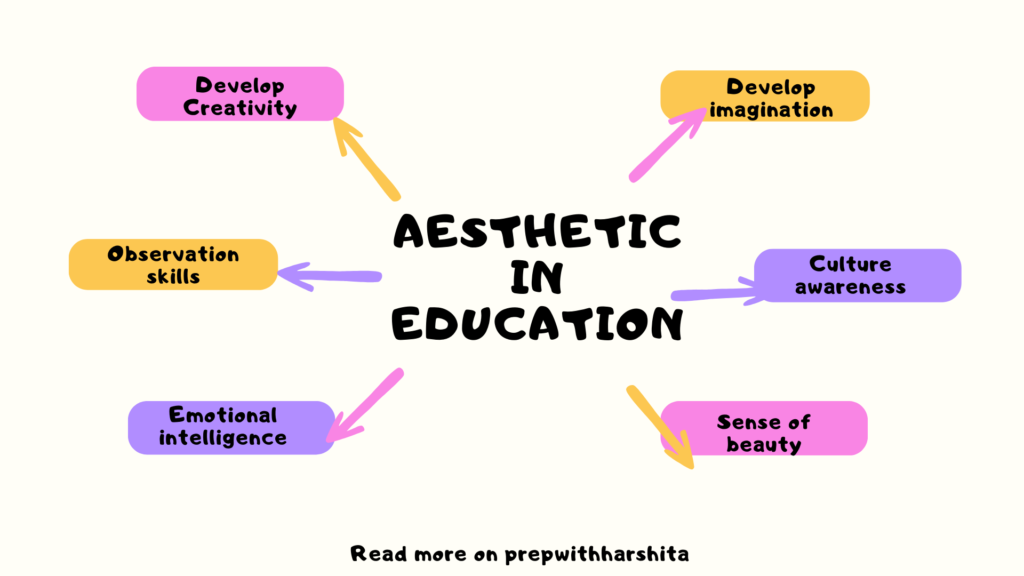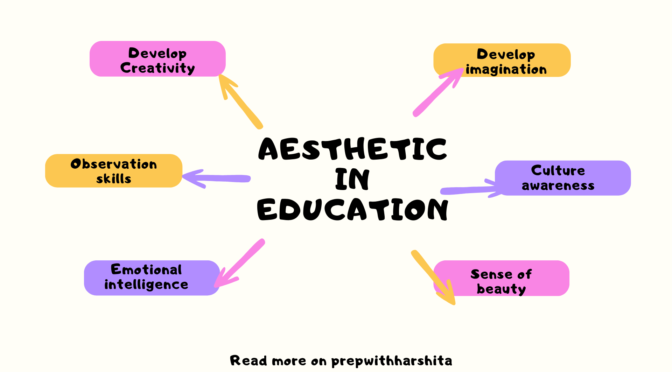Aesthetics is the branch of philosophy concerned with the study of beauty and taste, and it plays an important role in education.
The aesthetic dimension of education is concerned with developing a sense of appreciation for beauty and creativity in various art forms such as music, visual arts, drama, and literature.
Role of Aesthetic Dimension in Education
- In education, the aesthetic dimension helps to develop a child’s creativity, imagination, and emotional intelligence.
- Aesthetic education involves exposing children to various art forms and encouraging them to engage in creative activities, such as painting, drawing, singing, and acting. This exposure helps children develop a sense of beauty, taste, and aesthetics.
- Aesthetic education is not only important for developing creativity and imagination in children but also for fostering critical thinking skills.
- Through the study of art, children learn to think critically and develop their analytical and interpretive skills. For example, analyzing a work of art requires careful observation, interpretation, and evaluation, all of which are important skills that can be applied to other areas of learning.
- The aesthetic dimension of education is also important for fostering cultural awareness and appreciation. Through exposure to art from different cultures, children can learn about different traditions, values, and beliefs, and develop a deeper understanding and respect for cultural diversity.
In conclusion, the aesthetic dimension of education is an important aspect of developing well-rounded, creative, and culturally aware individuals. It plays a crucial role in the development of a child’s cognitive, emotional, and social development.
Read Also: Motivation cycle



Throughout the awesome scheme of things you actually receive an A with regard to hard work. Where exactly you confused everybody was first in your facts. As they say, details make or break the argument.. And it could not be more true at this point. Having said that, allow me inform you just what exactly did work. Your authoring can be rather persuasive and that is most likely the reason why I am taking an effort in order to opine. I do not really make it a regular habit of doing that. Next, despite the fact that I can notice a jumps in reasoning you come up with, I am not really confident of how you seem to unite the points which make your final result. For the moment I will subscribe to your issue however wish in the foreseeable future you connect the dots better.